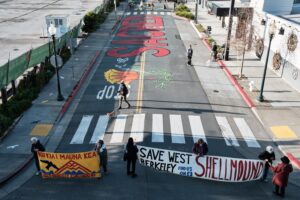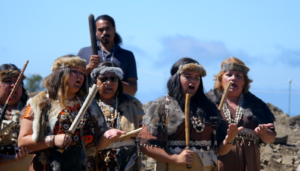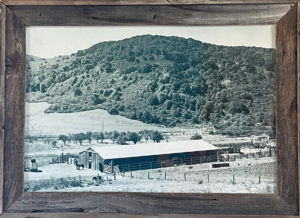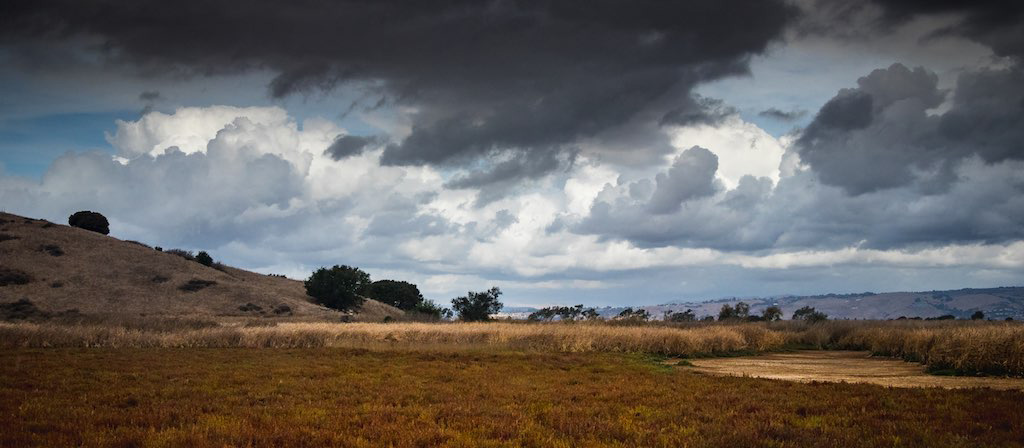
In the origin narratives of many indigenous communities that have lived in what is now known as California since time immemorial, there is a recurring concept that “The People” are connected to a specific place. These ancient chronicles articulate the deep understandings that “The People” were not only from a distinct place, but are made of that place. Creation narratives often describe how humans were made of the very materials of that landscape at the world’s dawn. Whether plant, rock, soil or other living ingredient, the accounts of humans coming into the world made very clear the what, when and how of our existence. They stated why “The People” must know of their beginnings, so they can learn how they are to live in their birthplace and the crucial lessons of respecting their homelands to create abundance for all living things. Above all, they teach us to be grateful for this gift of the homeland, humans often being the last of living things brought into the world that The First People (first beings living in this world, before humans) labored to maintain for our benefit.
These concepts are among the fundamental elements of what it means to be Indigenous. This certainly applies to our Ohlone communities of the San Francisco and Monterey Bay Areas, who have been the caretakers of this part of the world since time began (as much as 15,000 years based on western science). Despite the severe disruption and near eradication of Ohlone People over the last two and a half centuries, the unbreakable bonds with our homelands have allowed us to survive the genocide of Native Americans in California. Now, at the dawn of a new millennia, Ohlone People in their varied communities, organizations and extended family groups are thriving in their homelands once again.
On the first Sunday of October (as happens every year), many of us will meet at the 25th annual Gathering of Ohlone Peoples at Coyote Hills Regional Park in Fremont, hosted by the East Bay Regional Park District (EBRPD). When EBRPD Naturalist (1990-2014) Dr. Beverly Ortiz founded the Gathering in 1994, seven Ohlones and one dance group presented at what was then the first-ever greater-Bay-Area special event to highlight Ohlone history and cultures past, present and future. There are now four dance groups with Ohlone membership, and more than 70 individual Ohlones who have served as presenters, including representatives of every contemporary Ohlone tribe, tribal organization, and community.
While all EBRPD parks have cultural heritage of California Indigenous People (mostly Ohlone), Coyote Hills is one that has cultural importance to the local Ohlone community, with heritage that EBRPD now has the responsibility to maintain, interpret and protect. Since 1994, the Gathering has grown and deepened the representation of the varied Ohlone communities of coastal Central California.
“In 1994, few people in the Bay Area were aware that Ohlones existed,” recalls Dr. Ortiz, now EBRPD’s Cultural Services Coordinator, “let alone that they were thriving and becoming increasingly public about their concerns around such cultural preservation issues as the protection of ancestral village, burial, and sacred sites, the continuance and restoration of cultural traditions within both old and new contexts, and their lack of federal recognition. In the intervening years, the event has grown in scope, as has the breadth of Ohlone cultural involvements and political advocacy.”
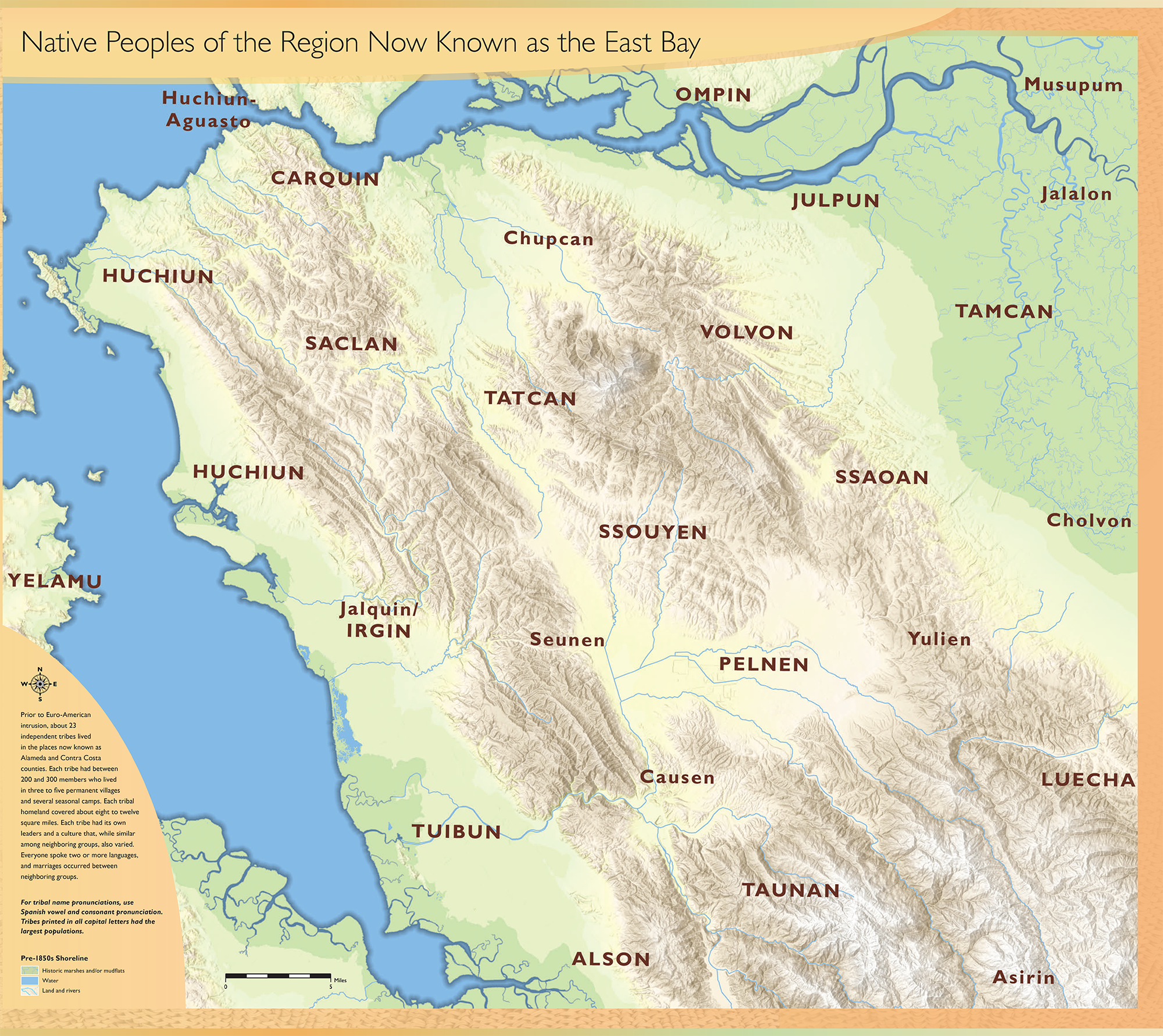
Coyote Hills is an exceptional location for the public to come and appreciate the ancient and enduring Ohlone legacy. This relatively small parkland has four Ohlone village sites that are more than 2,000 years old. Although substantially changed over the centuries since European colonization, there is still vegetation, water elements, fragrant plants and landscape features that Ohlone Ancestors of millennia ago would likely find familiar. It is these things and more, that draw Ohlone People to return here in the present. A number of Ohlone come periodically to the park to participate in public programs and to demonstrate aspects of Ohlone heritage, such as native uses of plants and animals, tule boat making, and other expressions of Ohlone knowledge that sustained “The People” for countless generations.
For many in the Ohlone community, it is the memory of the ancestors’ gifts that drive us to sacrifice time, effort and emotion in the honoring and sharing of our heritage, as our ancestors did long ago. That legacy is what the many Ohlone communities strive to maintain and have thrive in our youth and contemporary society. Having personally attended nearly every Gathering since the beginning, I have seen huge growth of awareness in the Ohlone community that is now reviving our cultures within their own tribal families, communities and with other Ohlone and California Indigenous culture preservationists and allies.
In today’s modern world, California is acknowledged as a major “melting pot” of the Western Hemisphere, with so many people having “immigrated” to this state over the last 250 years. What is not generally known to the public about California before Euro-American contact is the vast diversity of cultures that were here, that in some ways exceed those in today’s California. Rather than a generic “Indian” population, California gave birth to an astonishing array of languages, value systems, cultural beliefs and traditional practices not seen before in human history. There were more languages spoken (hundreds of languages and dialects) in California than anywhere else in the world. The Ohlone landscape of today reflects that diversity.
Based on mission registers, conquistador accounts and historical records, we believe that there were about 58 distinct village communities or tribes in the language area now called “Ohlone.” This linguistic area of related languages and dialects (as many as eight are believed to have been used in Ohlone territory) stretches from Vallejo, south across the Carquinez Strait along the coastal range between the San Francisco Bay and the Central Valley, toward the Pinnacles area, then east toward the coast and back north, encompassing the Monterey Bay and coastal areas extending to the tip of the San Francisco Bay peninsula. The word “Ohlone” itself is a relatively new descriptor, derived from the name of a specific tribe (the “Oljon”) located on the coast north of Santa Cruz. Other names include the sometimes still used “Costanoan.” These linguistic labels are how Euro-American newcomers have “categorized” Ohlone People, as has been done throughout the state for other areas. It is, however, not how we saw ourselves.
There were and still are many communities, organizations and extended family groups that maintain their own autonomy, independence and heritages (what some today refer to as “sovereignty”) while fully acknowledging the familial, marital, historical and cultural bonds between us. This is seen in how communities throughout the state, including in the Ohlone homelands, are including their original indigenous names for themselves in their self-identity, such as “Confederated Villages of Lisjan” (East Bay Ohlone), Amah Mutsun Tribal Band (south of SF Bay), Association of Ramaytush Ohlone (SF Peninsula) and others.
Ohlone participants at the annual Coyote Hills’ Gathering highlight the breadth and depth of the entire Ohlone homeland. The multi-generational participation of many Ohlones to revive and thrive in continuing our ancient cultures is exciting to see. Dances, songs, short talks, stories, discussions, displays and numerous demonstrations of traditional practices have grown over the years. Individual areas for specific cultural exhibits allow for direct viewing of activities and discussions with Ohlone demonstrators. These are supplemented by knowledgeable park staff and volunteers.
The Ohlone community, in a quarter-century collaboration with East Bay Regional Park District, welcomes the public to attend the annual Ohlone Gathering to see this ancient and living culture. The goal of the Ohlone participants and EBRPD is to share traditions our Ancestors have passed on to us with great sacrifice and hardship that have survived to today. What has made me hopeful the last few years is seeing the growth in knowledge and expression of our young Ohlone. They are the dream of our Ancestors come to life. Through the darkness of genocide and oppression, our Ancestors believed that one day we would again be able to openly proclaim and practice the traditional knowledge handed down through generations. It is happening now with our young Ohlone generations that know who they are, where they come from and what beautiful heritage the Ancestors have gifted them. That dream is now becoming a reality of “Thrivance” for Ohlone and other Indigenous communities of California. I have seen an explosion of interest in the Ohlone Youth, most of them of an age that they do not recall a time when the Gathering was not a cherished annual “reunion” of Ohlone relatives and neighbors. Many of these young people are now cultural demonstrators and presenters, not only at the annual Gathering, but also giving talks throughout the homeland at events, educational institutions, meetings and public venues. We see the Annual Ohlone Gathering as a way to proclaim our continuing existence and perseverance in passing along our ancient culture to future generations; the same tradition of preservation that our Ancestors have been carrying on for many thousands of years. The endurance of our legacy, and the resilient people that make up the Ohlone population, are a testament to our unbreakable ties to our cultures, history, spiritual beliefs, and to the very land itself. Ohlone People will endure and prosper as long as the land itself welcomes us yearly and daily.

